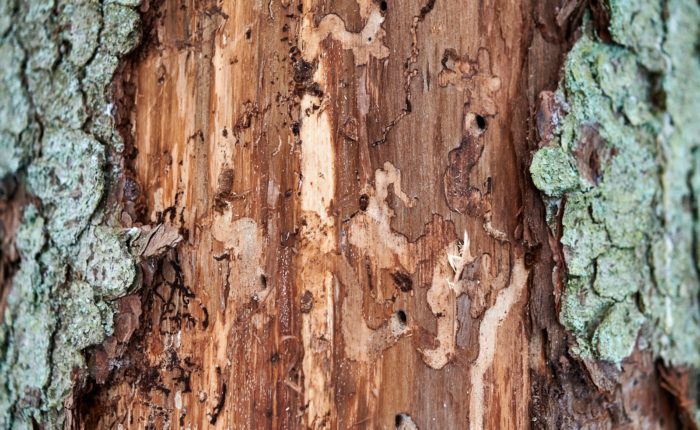Common Signs of Bark Damage: What To Look For On Your Trees This Winter
February 12, 2021

If you’ve ever had a tree you didn’t want, you know that trees can be tough as nails and difficult to kill. The inverse may also be true. If you’ve ever had a tree you loved, such as a family heirloom fruit tree, you may have found it nearly impossible to keep your tree happy, healthy, and growing. Sometimes, it’s easier to hand off your tree problems to an expert. Other times, there may be home remedies to boost your tree’s natural defenses.
If you’re not a tree expert, early signs of tree damage can be difficult to spot. Tree pests, disease, fungus, and environmental woes can vary tremendously depending on the time of year. Trees are prone to sunscald, dehydration, spotted lanternfly infestation, and more in the scorching summer temperatures. Conversely, the cooler months bring the threat of frost cracks, long term dehydration, waterlogged roots, frozen root systems, and split bark.
Split bark and frost cracks are widespread.
Philadelphians know fluctuating temperatures well — as do our trees. Nighttime temperatures can dip well below freezing, and mornings are often frosty. As the daytime sun warms the tree’s exterior, the inner layers rapidly expand. After sunset, these internal layers quickly freeze.
Fluctuating temperatures affect both tree bark and pottery similarly. Simply put, the temperature change shock creates brittleness and tension within the bark’s inner layers. Over time, the constant stress and increased brittleness of the tree bark cause the bark to crack.
Keep an eye out for discolored or cracked bark.
If you notice any discolored or cracked bark, your tree has likely suffered sunscald, especially if the bark is thin. Trees are resilient, and they have a fantastic ability to recover from just about anything. Most of the time, sunscald is not dire nor life-threatening. Like many living beings, young trees are more fragile as they’re becoming established. For this reason, it’s essential to check your young trees often as they acclimate to their new home. Older trees tend to take the damage in stride.
Minor issues can lead to more significant problems.
While sunscald and vertical cracks are minor ailments on their own, bark damage can increase your tree’s susceptibility to a host of other problems. For this reason, it’s important to consult a qualified tree professional to diagnose, treat, and prevent further problems down the line.
At All The Above Tree Service, we’ve seen all the above. For more information about our tree care services, including tree removal and tree treatment, reach out to our team today!
